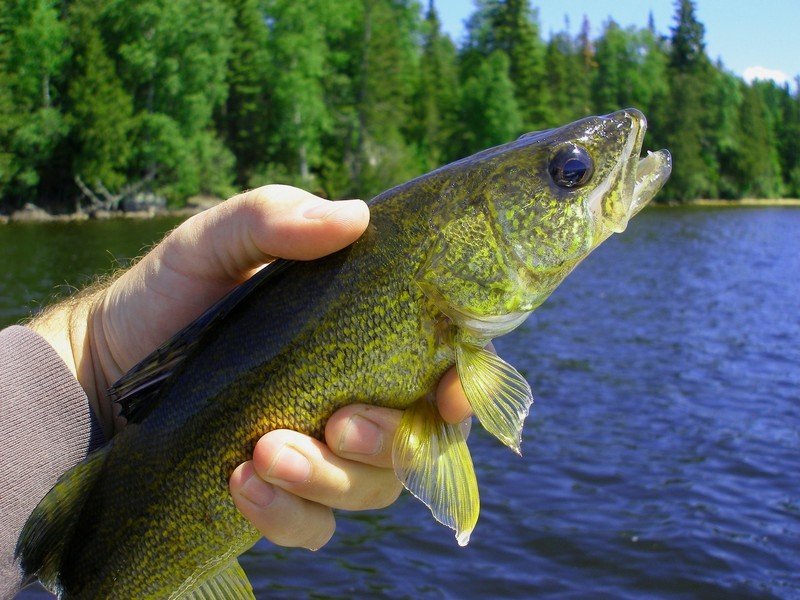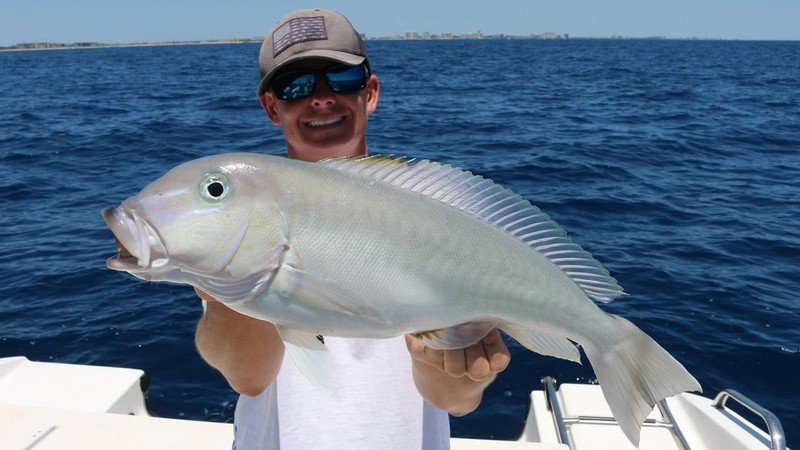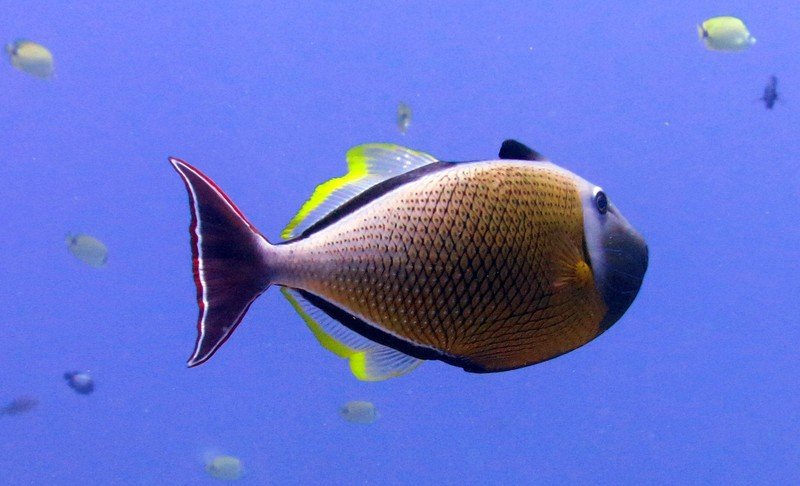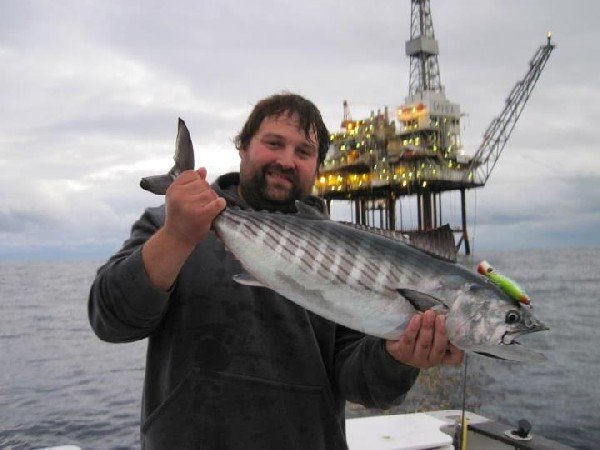Something fishy's going on: How Google names in-development Pixels

I love technology and all the associated gadgets and gizmos that go along with it. I'm that guy who is likely to have the latest gear, and I enjoy finding ways to make them all work better. But my life-long passion is something a bit simpler: fish.
I love fish. I love keeping small tropical fish in aquariums, I love feeding them at the local park, I love catching them, and I love eating them. Before I ended up in a wheelchair, I even loved snorkeling with them. Thanks to my father's enthusiasm, I've always been a fish lover.
It's apparent that at least one of Google's hardware engineers shares my obsession, as every Pixel phone has used a fish name as its internal code name. You might have already known this, but I thought it would be really cool to put a face (because fish have faces and they are beautiful) to the name and look at the fishy history of Pixel code names.
Google Pixel 4: Everything you need to know, except the fish code names)
The Google Pixel: Sailfish
Sailfish live in the colder areas of all oceans. They can reach a size of 10 feet from bill (that's the pointy spike on their snout) to tail and weigh up to 200 pounds. A sailfish is one of the fastest fish in the ocean reaching sustained speeds of 22 mph (10 meters per second).
Sailfish don't have a pointy nose for looks — it is used as a weapon to catch prey and for defense. Sailfish will swing their heads back and forth wildly to injure both the things it wants to eat and the things that want to eat it, with the usual result being pretty messy one way or the other.
Sailfish are popular gamefish and their numbers are not currently in danger or declining.
Get the latest news from Android Central, your trusted companion in the world of Android
The Google Pixel XL: Marlin
There are 10 species of marlin, with the most well known being the Black Marlin of the Indo/Pacific and the Atlantic's Blue and White Marlins. The Blue Marlin is the fastest fish in the sea with swimming speeds clocked as high as 50 mph in bursts.
They are also big. Both the Black Marlin and Blue Marlin reach lengths of over 16 feet (5 meters) and tip the scales at 1,400 to 1,800 pounds (635 to 816 kilograms). Like the Sailfish, which is a close relative, Marlin use their bills to subdue prey and for defense.
The Blue Marlin and the White Marlin are both classified as endangered due to overfishing. Seeing charter boats come in at the end of the day hoisting one or more Marlin used to be commonplace, but today they are strictly designated catch-and-release — and that's a good thing.
The Google Pixel 2: Walleye
The Walleye is a freshwater fish native to Southern Canada and the Northern United States. They can reach a length of about 30 inches (80 cm) and weigh up to 20 pounds (9 kilograms). They are also a popular gamefish and considered excellent on the dinner plate — I can personally vouch for this one.
The name Walleye comes from the orientation of the eyes; each points outwards from the body giving the impression that the fish is staring at the walls. The eyes also reflect light at night, which can be visible from the surface when the water is shallow and clear.
The Walleye is Minnesota's state fish, and each year at the Minnesota state fair you can find a long line to get deep-fried walleye on a stick. I'm adding this to my bucket list.
The Google Pixel 2 XL: Taimen
The Siberian Taimen is the largest salmonoid in the world, reaching a whopping 83 inches (210 cm) and a weight of 231 pounds (105 kilograms). It's found over a wide range of Asia, in both the Caspian / Arctic drainage as well as the Pacific drainage.
It's a river-dwelling fish and its diet mostly consists of other fish, but on occasion, it will eat terrestrial prey like rodents, reptiles, and birds. With the large size it reaches and the teeth that most salmonoids can have, you might think it could pose a danger to humans but no recorded cases of Taimen attack have been recorded.
The Taimen is becoming a popular gamefish, with most fishing done using fly tackle and barbless hooks for easy release. Though it is very closely related to fish like the Chinook or Atlantic Salmon, it does not move upstream to spawn.
The Google Pixel 3: Blueline
The Blueline Tilefish can be found all along the Eastern Seaboard, but the bulk of the population is clustered from Nantucket Island south to Cape May, New Jersey. They are a deep water fish, with a preferred range of 240-780 feet (73-238 meters) and can grow up to 35 inches (89 cm) and live up to 25 years.
Blueline Tilefish is a popular sporting fish, but usually not by choice — they are considered by many charter captains as "save the trip" fish. That means when the fish you are after isn't biting, a quick stopover to Blueline Tilefish habitat will usually mean you don't go home empty-handed.
Despite fishing pressure, Blueline Tilefish have a healthy population. This is due, in part, to wildlife management at the state level and through programs like the Mid-Atlantic Fishery Management Council. Let's hope things stay this way!
The Google Pixel 3 XL: Crosshatch
The Crosshatch is a beautiful Triggerfish from warm waters in the Pacific Ocean, with a sizable population found along the reefs of Hawaii. Ask anyone who has encountered one while diving and snorkeling and they will tell you two things: they get big, and they are not afraid to lunge and bite. Diver beware.
The name "triggerfish" comes from a unique arrangement of dorsal spines. The first spine is locked in its erect position by the raising of a second, shorter spine. The only way the first longer spine will come down is if the second spine is depressed. This can lodge the triggerfish in a small cave or hole or make it too "spiny" to swallow. Both things are an excellent deterrent against predation.
The Google Pixel 3a: Sargo
The Sargo is a species of seabream found in the Mediterranean and Atlantic coast of Africa. What it lacks in gaudy colors it makes up for in swiftness; two U.S. Navy submarines have been named after the little Sargo.
You'll find Sargo from the surf zone out to a depth of 50 meters, where they happily eat anything their strong jaws can crush like corals and mollusks. Sargo are commercially fished but must be eaten fresh as the meat will taste bad if the fish is dead for more than a short time.
Sargo are protandrous hermaphrodites, which means that they start life as males and have the ability to turn female later if there is a biological need, such as a lack of suitable breeding females. Many other ocean fish also exhibit this trait, including the orange and white Clownfish that Finding Nemo made popular.
The Google Pixel 3a XL: Bonito
Bonito means "pretty" in Spanish and Portuguese, but it's also a name for a group of ocean fish closely related to the mackerel.
Reaching sizes of 30 inches and 15 pounds, Bonito are found in all the world's oceans. The Atlantic Bonito can be found almost from pole to pole, and this strong swimmer is a popular gamefish for both coastal and offshore fishermen.
A big part of the reason why is the firm flesh resembles that of tuna, another close relative. A day's catch of Bonito cut into steaks and grilled with a bit of mint and jalapeno pepper makes an excellent meal and something every grilling aficionado needs to try.
The Google Pixel 4: Flame
The "flame" in the Pixel 4's code name stands for Flame Angel — one of the most beautiful reef-dwelling fish out there.
Found in most Pacific coral reef biotopes, the Flame Angelfish is abundant in Hawaii, which is a diving hotspot. That means plenty of people get to see the small (around 4 inches) beauty spending its time nibbling away at algae and small crustaceans.
This has made the Flame Angelfish a very popular aquarium fish, where it is right at home in any aquarium of suitable size with plenty of nooks and crannies to hide. In captivity, it's usually easy to wean a Flame Angelfish away from its diet of algae and meaty crustaceans to a more tank-friendly diet of balanced pelleted food. Usually.
The Google Pixel 4 XL: Coral
While "coral" is sort of a fishy name on its own, this time it's short for the name of another of the world's prettiest reef-dwelling fish: the Coral Beauty.
It shares many characteristics with the Flame Angelfish listed above. It's common in the warm shallow reefs of the Indo-Pacific and is small, reaching a maximum size of three inches. In the wild, the bulk of its diet is made of meaty crustaceans and mollusks, as it can nibble away at their shells with its powerful teeth.
One way that it differs from the Flame Angelfish is its reef aquarium "safeness" — the Coral Beauty will nibble away at corals, clams, hermit crabs, scallops, and anything else it thinks tastes good and can catch.
There is also a deep-water variant of the Coral Beauty, which shares all the characteristics as the phenotype except the coloration. The deep-water type is brown and yellow instead of strikingly marked in orange and blue.
None of this will help you get better battery life from your Pixel phone or find secret ways to make it perfect for you. But it is cool — knowing that there are fish nerds at Google lets us remember that they are regular folks like you and me. Remember this the next time you grab a rod or take a trip to the pet store.

Jerry is an amateur woodworker and struggling shade tree mechanic. There's nothing he can't take apart, but many things he can't reassemble. You'll find him writing and speaking his loud opinion on Android Central and occasionally on Threads.










